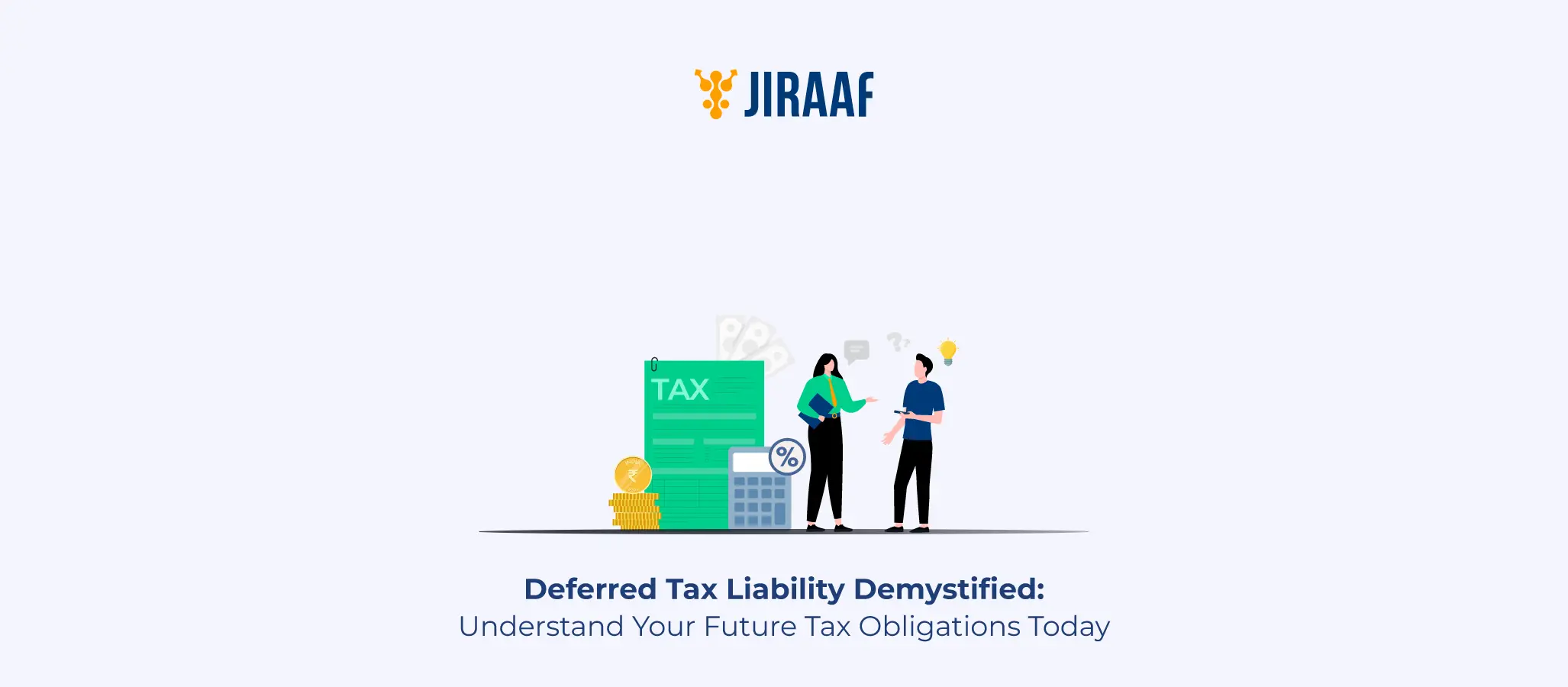Taking an education loan is a big step towards your career growth and future potential. But what if you could lighten the financial load it brings with a tax benefit at the same time? That’s where Section 80E of the Income Tax Act comes into play—it is a smart provision that helps you save taxes on the interest you pay on your education loan. Whether you’re a student or a parent funding your child’s dreams, this deduction can be a valuable ally for supporting career goals.
In this guide, you’ll learn everything you need to know about Section 80E—from eligibility and deduction limits to filing tips, and key comparisons. Let’s get started!
What Is Section 80E of the Income Tax Act?
Section 80E is your ticket to tax relief on the interest paid on an education loan. It allows you to claim a deduction on the total interest component of your loan repayment—without any upper limit on the amount. This benefit is available for higher education loans, both in India and abroad, and applies only to the interest, not the principal.
And here’s the best part: you don’t need to submit any bills or forms while claiming it. If you’ve taken a loan for eligible courses and you’re repaying interest, you qualify—plain and simple.
Who Can Claim the 80E Deduction?
You can claim this deduction if:
- You are an individual taxpayer (no HUFs or companies).
- You’ve taken an education loan for yourself, your spouse, children, or someone for whom you’re a legal guardian.
- You’re repaying the interest on that loan during the financial year.
Can Parents or Guardians Claim 80E?
Absolutely. If you’re a parent or legal guardian who has taken a loan for your ward’s higher education, you’re eligible to claim the deduction—even if the child is the student. The key factor is the person claiming the deduction must be the one making the interest payments.
So, whether you’re a mother paying EMIs for your daughter studying in the US or a father funding your son’s MBA in Delhi—you can avail the benefit under Section 80E.
How Much Can You Deduct Under Section 80E?
You can claim the entire amount of interest paid during the financial year as a deduction. Yes, you read that right—there’s no maximum limit for the interest component.
However, there’s a time cap:
- You can claim this deduction for a maximum of 8 years, starting from the year you begin repaying the loan.
- Or until the interest is fully repaid—whichever comes first.
So, if your loan repayment stretches over 10 years, you can only claim for the first 8. But if you’re done repaying in 5 years, the deduction ends there.
Types of Loans and Institutions Covered
To be eligible under Section 80E, your loan must be:
- Taken from a financial institution or an approved charitable institution.
- Used for higher education in India or abroad.
What Counts as Higher Education?
Any course pursued after passing the Senior Secondary Examination (Class 12) qualifies. This includes:
- Graduate and post-graduate degrees (like BTech, MBBS, MBA, etc.)
- Vocational courses
- Specialized courses abroad (like CFA, CPA, or MS programs)
Note: If you borrow money from friends, relatives, or an unapproved lender (say a fintech app not registered with RBI), it won’t count for 80E.
How to Claim 80E Deduction While Filing ITR
You don’t need a separate form or registration to claim this deduction. Just follow these simple steps:
- Get a certificate from your lender (bank/NBFC), clearly showing the interest paid on the education loan for the financial year.
- Log into the Income Tax e-filing portal.
- Select your applicable ITR form (usually ITR-1 or ITR-2).
- Under the “Deductions under Chapter VI-A” section, locate Section 80E.
- Enter the total interest amount paid during the year.
You won’t need to attach the certificate while filing online, but do keep it handy in case the IT Department requests it for verification.
Section 80E vs 80C: Key Differences
Let’s see a few differences between sections 80E and 80C, through this side-by-side comparison.
| Feature | Section 80E | Section 80C |
| Type of deduction | Interest on education loan | Investments and payments |
| Maximum limit | No limit | ₹1.5 lakh per year |
| Duration | Max 8 years | Every financial year |
| Applicable to | Individuals only | Individuals and HUFs |
| Covers principal? | No | Yes (if invested in eligible options) |
| Popular examples | Education loan interest | PPF, ELSS, Life Insurance, etc. |
Can You Claim Both 80E and 80C?
Yes! Section 80E is over and above the ₹1.5 lakh limit under Section 80C. So, you can:
- Invest in ELSS or PPF and claim under 80C.
- Pay education loan interest and claim under 80E.
Common Mistakes & Tips for Smooth Filing
Even though Section 80E is fairly simple to claim, there are some common slip-ups you should try to avoid.
Mistakes to Watch Out For:
- Claiming for principal instead of interest
- Assuming foreign lenders (not registered in India) are valid
- Using personal loans or other informal sources
- Forgetting to renew or download the interest certificate each year
- Not tracking the 8-year time limit
Smart Tips:
- Set a calendar reminder to get your interest certificate annually.
- Double-check if the lender is approved (check their RBI registration status).
- Combine 80E with 80C to boost tax savings.
- Use tax-filing platforms that auto-suggest deductions based on your income and payments.
Example to Understand 80E Tax Benefit Better
Let’s say you took an education loan for ₹10 lakh to fund your MBA. Your bank gives you a certificate stating you paid ₹85,000 as interest this financial year.
Assuming you’re in the 20% tax bracket.
Tax saved = ₹85,000 × 20% = ₹17,000
That’s ₹17,000 back in your pocket—just by entering the interest paid under Section 80E while filing your ITR. Multiply that over 8 years, and you could save over ₹1.3 lakh in total.
And guess what? If your income increases and your tax bracket jumps, your savings increase too!
Conclusion: Maximize Your Education Loan Tax Benefits
An education loan is more than just financial aid—it’s a bridge to bigger dreams. And with Section 80E, you’re not just repaying the loan; you’re reclaiming your taxes along the way.
Use this deduction wisely; know the rules, track your interest payments, and claim it accurately during filing. Combine it with other deductions like 80C and 80D to reduce your total tax liability even more.
If you’re funding someone else’s education, like your child or spouse, don’t forget—you’re just as eligible to claim this benefit. And remember, every saved rupee adds up when you’re planning your financial future.
FAQs
What is Section 80E and who can claim it?
Section 80E offers a tax deduction on interest paid for education loans. You can claim it if you’ve taken a loan for higher studies for yourself, your spouse, children, or a student for whom you’re a legal guardian. The deduction applies only to the interest—not the principal—and there’s no cap on the loan amount.
Is there a limit on the 80E deduction?
There’s no upper limit on the amount you can claim under Section 80E. However, the deduction is available only on the interest component of the education loan and can be claimed for a maximum of 8 assessment years, starting from the year you begin repaying the loan.
How do I claim the 80E deduction in my ITR?
To claim the deduction, select the appropriate section in your ITR (under “Deductions under Chapter VI-A”) and enter the interest paid. Keep the bank’s loan interest certificate as proof, though you don’t need to upload it. Make sure the loan is from a recognized financial institution or bank.
Can I claim 80E for loans taken for my siblings’ education?
No, you cannot. Section 80E allows deductions only if the loan is taken for higher education of yourself, your spouse, your children, or a student for whom you are a legal guardian. Loans for siblings or other relatives do not qualify for this deduction.
Discover fixed income investments with Jiraaf, a SEBI registered online bonds platform that educates and brings access to a wide array of bonds. Sign up today to explore diversified fixed income investment opportunities to support your goal-based wealth creation journey. Start investing!









